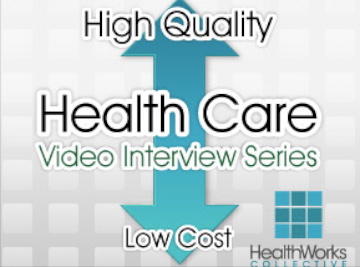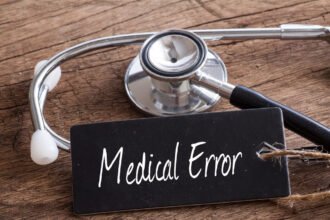

Last week we heard Dr Valenti tell us about The Physicians Foundation and how it could help improve healthcare. Today, Kelly Tappenden, PhD, RD talks about the Alliance to Advance Patient Nutrition.
The Alliance is the result of the partnership of five prestigious healthcare organizations: Academy of Medical-Surgical Nurses (AMSN), the Academy of Nutrition and Dietetics (AND), the American Society for Parenteral and Enteral Nutrition (A.S.P.E.N.), the Society of Hospital Medicine (SHM) and Abbott Nutrition. The Alliance now represents more than 100,000 healthcare professionals and has for goal to raise awareness about hospital malnutrition and improve patient outcomes while reducing costs through early nutrition screening, assessment and intervention.
Kelly Tappenden, PhD, RD, is a Professor of Nutrition and Gastrointestinal Physiology and Editor in Chief of the Journal of Parenteral and Enteral Nutrition. She is the Clinician Representative for the Alliance to Advance Patient Nutrition.
To see other videos in this series, please go to this page. And if you have a story to tell that can reduce healthcare costs and raise quality of care, please comment below or email me at joan@socialmediatoday.com Thanks!
Video transcript (by transcriptionstar)
Joan: Hello. I’m Joan Justice with HealthWorks Collective, and I’m here today with Kelly Tappenden from the Alliance To Advanced Patient Nutrition. The Alliance is the result of the partnership of five prestigious healthcare organizations representing more than a 100,000 healthcare professionals and has the goal to raise awareness about hospital malnutrition and improve patient outcomes while reducing cost through early nutrition screening, assessment and intervention.
Kelly Tappenden PhD RD is a Professor of nutrition and gastrointestinal physiology and she’s editor-in-chief of the journal of Parenteral and Enteral Nutrition. She’s the clinician representative for the Alliance to advanced patient nutrition. Kelly, tell us a little bit about the Alliance. How it started and what its mission is?
Kelly: Thank you Joan. I appreciated the opportunity to be here today and tell you about the Alliance because malnutrition is a very big problem in our country and its one that we don’t often hear about it. So I’ll tell you why its such a big problem, but first let me tell you the Alliance has been formed to improve the coordinated care of nutrition therapy for patients in the hospital so that we can reduce both the prevalence of malnutrition, but also the consequences.
We can improve patient outcomes through better nutrition. So one of the reasons that the Alliance is formed is to provide broad education to clinicians about how, how to understand that malnutrition is a very big problem, but how to recognize it and then how to intervene. Not only is malnutrition a burden on our healthcare system and patients outcomes, but by using proper coordinated nutrition care, we can really improve those outcomes too.
Joan: That’s — okay that’s understandable. Now, what is your research show about malnutrition? Is it you say its prevalent here in the United States? What are these mostly the elderly?
Kelly: Well, we know that there’s a high incidence of malnutrition among the elderly, but if we look at all adults entering the hospital one in three are actually malnourished. One in three individuals and that’s a problem because an individual who is malnourished is at more risk for complications.
So for example pressureosis if someone has malnutrition or it’s malnourished they have a two-fold increase in the risk of pressureosis. The rate of infection goes up three times in fact there length of say is actually longer as well as their readmission rate if they’re malnourished.
So its certainly is a problem that results in poor patient outcomes, but it also increwse cost as in our current healthcare environment trying to reduce cost while improving patient outcomes is a very big, big priority.
Joan: Absolutely, absolutely. Now, what steps are you recommending that hospitals take to reduce malnutrition? For instance I see that you have a toolkit for example that you can download from your website?
Kelly: Yeah we do have a toolkit and that can be found by clinicans@malnutrition.com. So clinicians can go there, and find all sorts of resources talking about the burden of malnutrition, but also the beneficial impact of nutritional intervention and then really some strategies that will help them practically implement better nutrition care within their institution because we know that providing strong nutrition care with individuals is going to help prevent those complications as well as reduced state.
In fact just getting back to that research we know that if an individual is to offered an oral nutrition supplement, our recent study showed that there will be a 6.7% reduction in their risk of arrhythmia, so a simple thing like an oral nutrition supplement can be very important in helping improving these outcomes.
Joan: It’s great. Well, I didn’t know that. Now, what about after discharge? Are these patients followed?
Kelly: That’s one of the things we really feel is important to have, to have a grid system in place and so when a patient is discharged from the hospital whether it would be to home or to another care environment we really need to have a nutrition care plan that is properly communicated and goes with that patient so its extended to the nurse clinicians who maybe following up with them via telephone or the primary care physician. The family is well-educated.
So there’s really three things that we, we want to advocate for making sure that 100% of patients within still are [screened] [0:05:04] to poor malnutrition using a valid screening tool. There’s all sorts of screening tools that are in place that can help clinicians easily identify patients at risk for malnutrition and make sure dietician gets there to asses there, to assess the nutrition status.
So making sure everyone is considered for this risk, and then not waiting and waiting and waiting. Sometimes nutrition is could off well, other medical issues are taking care off so immediately describing that nutrition care and intervening you know, not only are one in three individuals malnourished when they entered a hospital, but another healthy chunk of individuals will become malnourished while they’re in hospital and we can’t necessarily let that happen for reasons that we can prevent.
So having an immediate nutrition intervention getting into place is important and then as we were just saying following them through post-discharge to make sure that they’re cared once they get out of the hospital is critically important.
Joan: Yeah great thanks so much Kelly. I’m so glad that you could share this information with our readers, and we’ll look forward to hearing more about the Alliance to Advance Patient Nutrition. Thanks so much.
Kelly: Thank you very much.








